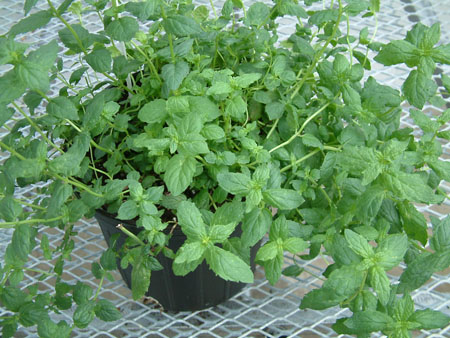Article
Minnow
Many people refer wrongly to any small fish as a minnow. Properly, minnows are small to large freshwater fish of class Actinopterygii, order Cypriniformes, family Cyprinidae.

Enter your search term
Signing up enhances your TCE experience with the ability to save items to your personal reading list, and access the interactive map.
Create AccountArticle
Many people refer wrongly to any small fish as a minnow. Properly, minnows are small to large freshwater fish of class Actinopterygii, order Cypriniformes, family Cyprinidae.
"https://d2ttikhf7xbzbs.cloudfront.net/media/media/310caf5d-4a5d-4276-b439-7f6aa2a2cfe0.jpg" // resources/views/front/categories/view.blade.phphttps://d2ttikhf7xbzbs.cloudfront.net/media/media/310caf5d-4a5d-4276-b439-7f6aa2a2cfe0.jpg

Article
Mint belongs to the mint family (Lamiaceae, also called Labiatae), a large plant family that also includes several aromatic and ornamental plants like basil, rosemary, oregano, thyme, coleus and sage.
"https://d2ttikhf7xbzbs.cloudfront.net/media/media/5e03b322-b373-4caa-af8c-7bc6cde241d4.jpg" // resources/views/front/categories/view.blade.phphttps://d2ttikhf7xbzbs.cloudfront.net/media/media/5e03b322-b373-4caa-af8c-7bc6cde241d4.jpg

Article
Mistletoe family, Loranthaceae, includes about 30 genera and over 1000 species. It is predominantly tropical but has members in temperate regions.
"https://development.thecanadianencyclopedia.ca/images/tce_placeholder.jpg?v=e9dca980c9bdb3aa11e832e7ea94f5d9" // resources/views/front/categories/view.blade.phphttps://development.thecanadianencyclopedia.ca/images/tce_placeholder.jpg?v=e9dca980c9bdb3aa11e832e7ea94f5d9

Article
Mite is a common name for most members of the subclass Acari, a large, diverse group of tiny arachnids that also includes ticks.
"https://d2ttikhf7xbzbs.cloudfront.net/media/media/8eb04cf7-636d-460f-a5d4-bedd5bf6298d.jpg" // resources/views/front/categories/view.blade.phphttps://d2ttikhf7xbzbs.cloudfront.net/media/media/8eb04cf7-636d-460f-a5d4-bedd5bf6298d.jpg

"https://development.thecanadianencyclopedia.ca/images/tce_placeholder.jpg?v=e9dca980c9bdb3aa11e832e7ea94f5d9" // resources/views/front/categories/view.blade.phphttps://development.thecanadianencyclopedia.ca/images/tce_placeholder.jpg?v=e9dca980c9bdb3aa11e832e7ea94f5d9

Article
Mole, common name for 20-29 species of predominantly burrowing insectivores of family Talpidae restricted to Eurasia and N America. Six species occur in Canada.
"https://development.thecanadianencyclopedia.ca/images/tce_placeholder.jpg?v=e9dca980c9bdb3aa11e832e7ea94f5d9" // resources/views/front/categories/view.blade.phphttps://development.thecanadianencyclopedia.ca/images/tce_placeholder.jpg?v=e9dca980c9bdb3aa11e832e7ea94f5d9

Article
The mollusc is a soft-bodied, usually shelled invertebrate belonging to one of the largest animal phyla (Mollusca) with some 100 000 living and about 35 000 fossil species.
"https://d2ttikhf7xbzbs.cloudfront.net/media/media/06525077-c3d6-4a56-a096-d0a611b208be.jpg" // resources/views/front/categories/view.blade.phphttps://d2ttikhf7xbzbs.cloudfront.net/media/media/06525077-c3d6-4a56-a096-d0a611b208be.jpg

Article
Although Canada's coastline is extensive and contains many diverse molluscan species, the resource is economically relatively small. In 1995 nearly 200 000 t valued at $114.5 million were taken.
"https://d2ttikhf7xbzbs.cloudfront.net/media/media/75b80a2e-5358-4b29-877d-cf3ed69aa9f5.jpg" // resources/views/front/categories/view.blade.phphttps://d2ttikhf7xbzbs.cloudfront.net/media/media/75b80a2e-5358-4b29-877d-cf3ed69aa9f5.jpg

Article
The monarch (Danaus plexippus) is a species of butterfly best known for its migratory habits. Sometimes called the wanderer butterfly, its annual migration is unlike that of any other insect found in North America. During Canadian summers, the monarch butterfly is normally found in every province except Newfoundland and Labrador, and is abundant wherever its host plant milkweed grows. Due to a decline in milkweed among other factors, the monarch butterfly is an endangered species. Still, its large size, orange-and-black colouration, and slow, sailing flight make it a familiar sight across most of Canada.
"https://d2ttikhf7xbzbs.cloudfront.net/Monarch/MonarchMilkweed.jpg" // resources/views/front/categories/view.blade.phphttps://d2ttikhf7xbzbs.cloudfront.net/Monarch/MonarchMilkweed.jpg

Article
The Montreal metro opened on 14 October 1966. The second Canadian subway system after Toronto’s, which opened in 1954, the Montreal metro was the first subway in North America to run on rubber tires instead of metal wheels. Extensions to the Montreal metro were built on Montreal Island over the two decades after it opened, and then to the city of Laval, on the island of Île Jésus, during the 2000s. The system runs entirely underground, and each station has a distinct architecture and design. The Montreal metro consists of four lines running a total of 71 km and serving 68 stations. In 2018, its passengers made more than 383 million trips.
"https://d2ttikhf7xbzbs.cloudfront.net/media/media/7cb43abc-85f5-4380-adb4-56f13bfebb41.jpg" // resources/views/front/categories/view.blade.phphttps://d2ttikhf7xbzbs.cloudfront.net/media/media/7cb43abc-85f5-4380-adb4-56f13bfebb41.jpg

Article
Moose are the largest living member of the deer family (Cervidae). Four subspecies are found in Canada: the Alaska/Yukon moose (Alces alces gigas), the shiras moose (Alces alces shirasi), the western Canada moose (Alces alces andersoni) and the eastern Canada moose (Alces alces americana). They live in every province and territory except Prince Edward Island. Often considered a symbol of Canada, the moose is featured on Ontario’s provincial coat of arms.
"https://d2ttikhf7xbzbs.cloudfront.net/media/media/82d06bf1-25ff-46ee-8ff5-93dd73cf05c4.jpg" // resources/views/front/categories/view.blade.phphttps://d2ttikhf7xbzbs.cloudfront.net/media/media/82d06bf1-25ff-46ee-8ff5-93dd73cf05c4.jpg

Article
The morning glory family, containing 1200 species of herbaceous plants, is represented in Canada by cultivated common morning glory and 3 related species; 11 species of climbing, parasitic dodders; and 5 species of bindweed.
"https://development.thecanadianencyclopedia.ca/images/tce_placeholder.jpg?v=e9dca980c9bdb3aa11e832e7ea94f5d9" // resources/views/front/categories/view.blade.phphttps://development.thecanadianencyclopedia.ca/images/tce_placeholder.jpg?v=e9dca980c9bdb3aa11e832e7ea94f5d9

Article
The mosquito (Spanish for "little fly") is a fragile, long-legged fly of the order Diptera, family Culicidae. Over 3,500 species are known worldwide and at least 82 are found in Canada. Often considered a nuisance to humans because of their itchy bites, it is the females that feed on the blood of other animals. Both sexes feed on plant fluids such as nectar. Most of the woodland species with which Canadians are familiar belong to the genus Aedes. These species are found throughout Canada and are recognizable by their alternating white and black colour, and slender, pointed abdomens. They are present in large numbers soon after winter’s end and on spring and summer evenings. The comparatively small northern house mosquito (Culex pipiens) is commonly found indoors in early spring and late fall, and is distinguished by its size and its blunt-tipped abdomen. Canada boasts the second oldest fossilized mosquito ever found. It is preserved in 76.5–79.5 million-year-old amber from southern Alberta.
"https://d2ttikhf7xbzbs.cloudfront.net/media/media/7861af71-7a87-4136-9077-7718fd7a1bf3.jpg" // resources/views/front/categories/view.blade.phphttps://d2ttikhf7xbzbs.cloudfront.net/media/media/7861af71-7a87-4136-9077-7718fd7a1bf3.jpg

Article
Moss is a small terrestrial plant, usually less than 10 cm tall, that lacks true conducting tissues (xylem, phloem) and has a dominant gametophyte (sexual) generation. Mosses are the largest and most highly developed group of division Bryophyta (which also includes liverworts and hornworts). Bryophytes are sometimes known as the “amphibians of the plant world” because of their dependence on water for sexual reproduction. There are over 10,000 species of moss worldwide, of which about 1,250 are found in North America. Individual parts of Canada have fewer species (e.g., 466 species in Alberta, 445 in Newfoundland, 430 in Ontario). Mosses thrive in humid climates, and coastal parts of Canada have a greater diversity than the interior parts.
"https://development.thecanadianencyclopedia.ca/images/tce_placeholder.jpg?v=e9dca980c9bdb3aa11e832e7ea94f5d9" // resources/views/front/categories/view.blade.phphttps://development.thecanadianencyclopedia.ca/images/tce_placeholder.jpg?v=e9dca980c9bdb3aa11e832e7ea94f5d9

Article
Moths are distinguished from butterflies by having threadlike or feathery antennae. Most are nocturnal. They vary in size from adults of some leaf miners with wings spreading little more than 3 mm to the Asian atlas moth, spreading 20 cm.
"https://d2ttikhf7xbzbs.cloudfront.net/media/media/380673b7-8db1-4be5-b284-6764c9a0030d.jpg" // resources/views/front/categories/view.blade.phphttps://d2ttikhf7xbzbs.cloudfront.net/media/media/380673b7-8db1-4be5-b284-6764c9a0030d.jpg
